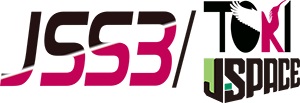NLFFF calculations of the solar coronal magnetic field based on Hinode observations
JAXA Supercomputer System Annual Report April 2019-March 2020
Report Number: R19EU0912
Subject Category: Space and Astronautical Science
- Responsible Representative: Yoshifumi Saito,, Institute of Space and Astronautical Science, Department of Solar System Sciences
- Contact Information: Toshifumi Shimizu (shimizu.toshifumi@jaxa.jp)
- Members: Yusuke Kawabata, Toshifumi Shimizu, Takahiro Hasegawa
Abstract
Our study focuses on understanding of the mechanism responsible for the occurrence of the solar flares. We derive 3D magnetic field structure in the corona by performing a 3D magnetohydrodynamics simulation using vector magnetic field maps acquired with the Hinode spacecraft. We investigate 3D magnetic field structure formed in the solar atmosphere responsible for the occurrence of solar flares.
Reference URL
Please refer to ‘ひのでプロジェクトのホームページ:TOP PAGE‘.
Reasons and benefits of using JAXA Supercomputer System
We perform 3D magnetohydrodynamics numerical simulations by using vector magnetic field data acquired with the Hinode spacecraft in order to derive 3D magnetic field structures in the solar corona. We need large computational resource in order to perform three-dimensional magnetohydrodynamics simulations.
Achievements of the Year
Nonlinear force-free field (NLFFF) modeling is a strong tool to derive the three-dimensional magnetic field in the solar corona, where the force-free approximation is valid. If we give the magnetic field map observed in the photosphere as a boundary condition, we can solve this nonlinear equation. However, Gary (2002) argued that the magnetic field at the photosphere does not satisfy the condition for the force-free. This year we attempted to obtain the chromospheric magnetic field (1000 km above the photosphere) with spectropolarimetric observations and compared it with the magnetic field dervied by the NLFFF modeling from the photsphere. We measured the shear signed angle (SSA) from the observed magnetic field and NLFFF. Our analysis shows that there is more twisted magnetic field in the chromosphere than photospheric magnetic field and the NLFFF estimated as shown in Figure 1.

Fig.1: Left panels: Top, middle, and bottom panels are he spatial distributions of shear signed angle (SSA) in the active region in the photosphere, NLFFF at 1500km height, and chromosphere, respectively. Right panels: The histogram of SSAs in the white rectangle of left panels. Black, red, and blue lines show the SSA in the photosphere, NLFFF at 1500km height, and chromosphere, respectively.
Publications
– Invited Presentations
Y. Kawabata, “Current status and future prospective of solar spectropolarimetry”, JSPC symposium, Tokyo, February-2020
– Oral Presentations
Y. Kawabata, A. Asensio Ramos, S. Inoue, T. Shimizu, “Chromospheric magnetic field: A comparison of He I 10830 A observation with nonlinear force-free field extrapolation”, Solar Polarization Workshop, Gottingen, August-2019
Y. Kawabata, A. Asensio Ramos, S. Inoue, T. Shimizu, ” Three-dimensional magnetic field structure in active regions~ Future prospective in EUVST era”, ASJ meeting, Kumamoto, September-2019
– Poster Presentations
Y. Kawabata, A. Asensio Ramos, S. Inoue, T. Shimizu, “Chromospheric magnetic field: A comparison of He I 10830 A observation with nonlinear force-free field extrapolation”, Hinode-13 Science Meeting, Tokyo, September-2019
Usage of JSS2
Computational Information
- Process Parallelization Methods: MPI
- Thread Parallelization Methods: N/A
- Number of Processes: 1 – 192
- Elapsed Time per Case: 20 Hour(s)
Resources Used
Fraction of Usage in Total Resources*1(%): 0.01
Details
Please refer to System Configuration of JSS2 for the system configuration and major specifications of JSS2.
| System Name | Amount of Core Time(core x hours) | Fraction of Usage*2(%) |
|---|---|---|
| SORA-MA | 0.00 | 0.00 |
| SORA-PP | 0.00 | 0.00 |
| SORA-LM | 0.00 | 0.00 |
| SORA-TPP | 5,750.94 | 0.35 |
| File System Name | Storage Assigned(GiB) | Fraction of Usage*2(%) |
|---|---|---|
| /home | 25.61 | 0.02 |
| /data | 254.85 | 0.00 |
| /ltmp | 5,208.34 | 0.44 |
| Archiver Name | Storage Used(TiB) | Fraction of Usage*2(%) |
|---|---|---|
| J-SPACE | 0.00 | 0.00 |
*1: Fraction of Usage in Total Resources: Weighted average of three resource types (Computing, File System, and Archiver).
*2: Fraction of Usage:Percentage of usage relative to each resource used in one year.
JAXA Supercomputer System Annual Report April 2019-March 2020


